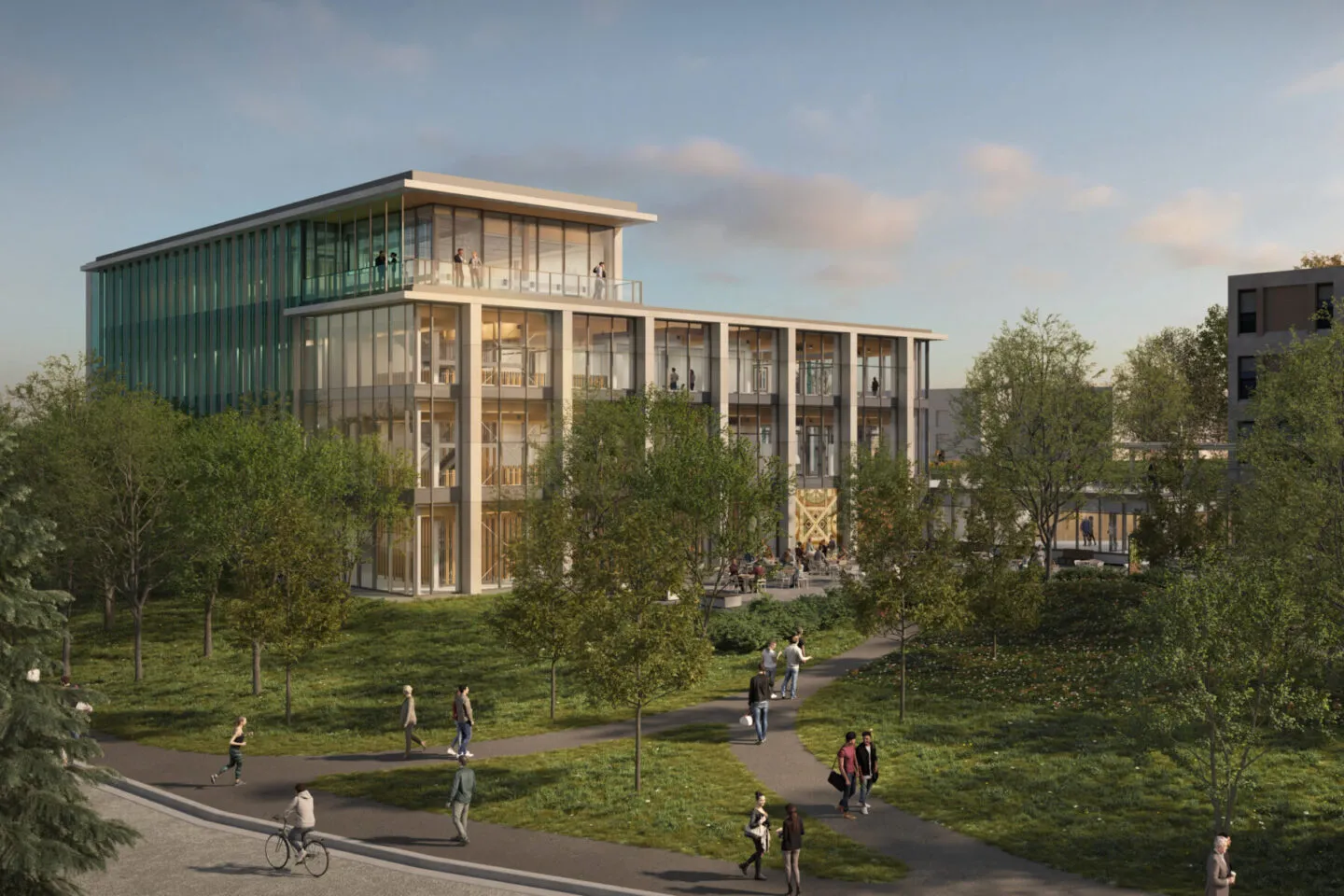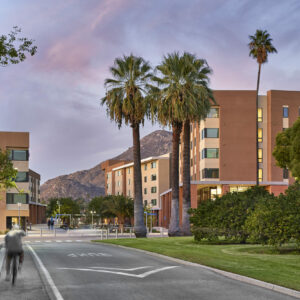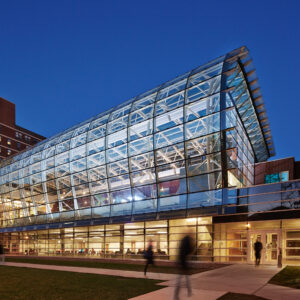Health and Social Innovation Centre
Client
University of New Brunswick
Location
Saint John, New Brunswick
The new Health and Social Innovation Centre at the University of New Brunswick is an interdisciplinary health science facility that aims to not only facilitate collaboration amongst disparate research groups, but also between students and faculty.
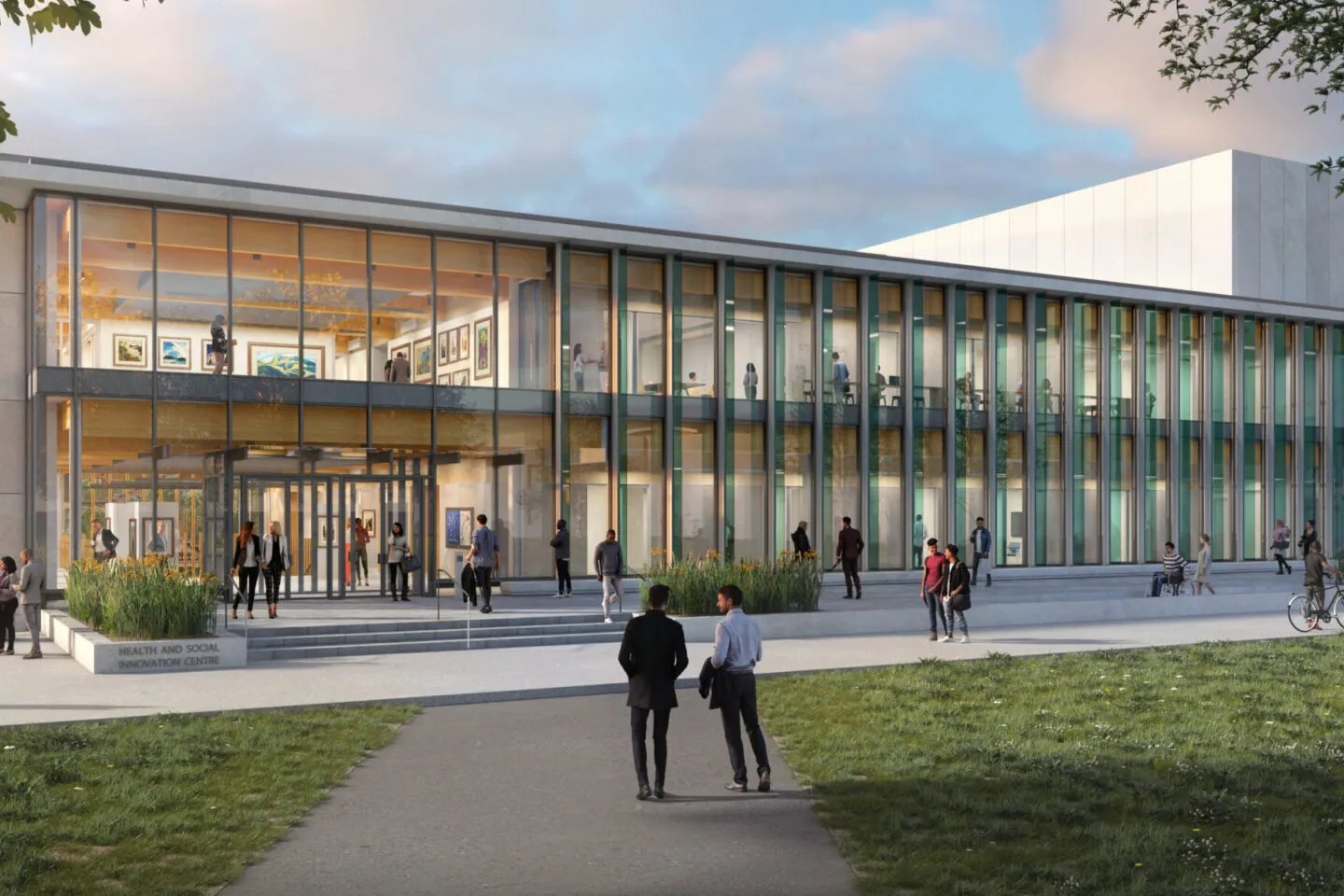
The 60,000 square foot, 4 story building occupies a prominent site in the campus’ academic core and redefines the central quad with its modern and transparent design. The building’s program ascends from public, more student-centric spaces to quieter, private spaces. By stepping down a level, the design team was able to connect the building to the campus’ existing pedestrian tunnel system. This floor features a retail food outlet, a large gathering space for students, and two active learning classrooms. A social stair connects the space to the quad-level above, which features an additional active-learning classroom, as well as a suite of flexible spaces that can be used as faculty offices, conference rooms, or group study rooms. Researcher offices and associated support spaces arranged into pods are located on the second floor, along with student study spaces, giving students exposure and access to the research based program. Level three offers a large multi-purpose room paired with a test kitchen, quieter places for individual contemplation and views to the Saint John and Kennebecasis Rivers. Outdoors, the project offers a healing garden filled with natural herbs and remedies associated with local first nations tribes and a plaza that can be flooded in the winter for recreational hockey and ice skating.
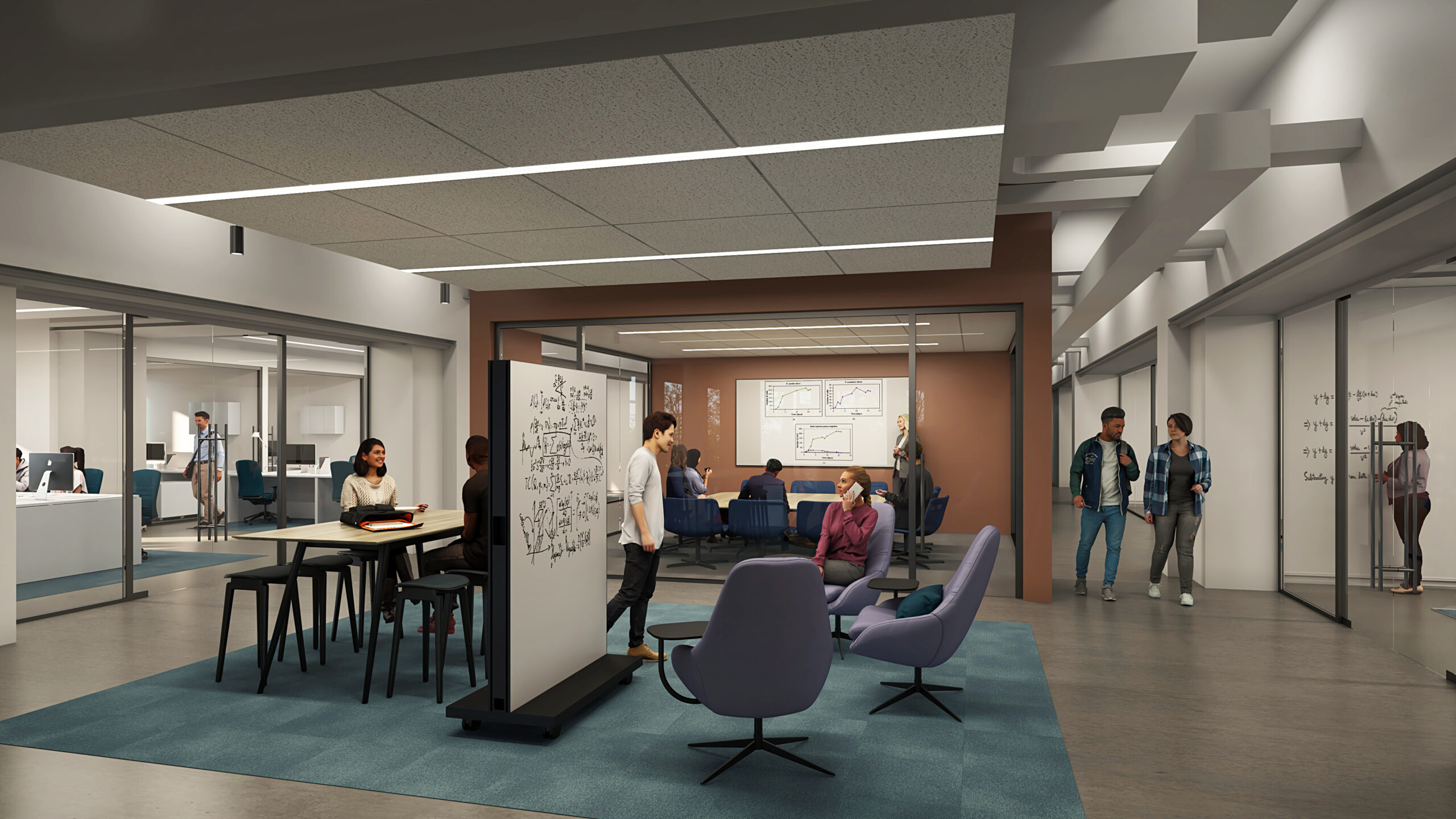
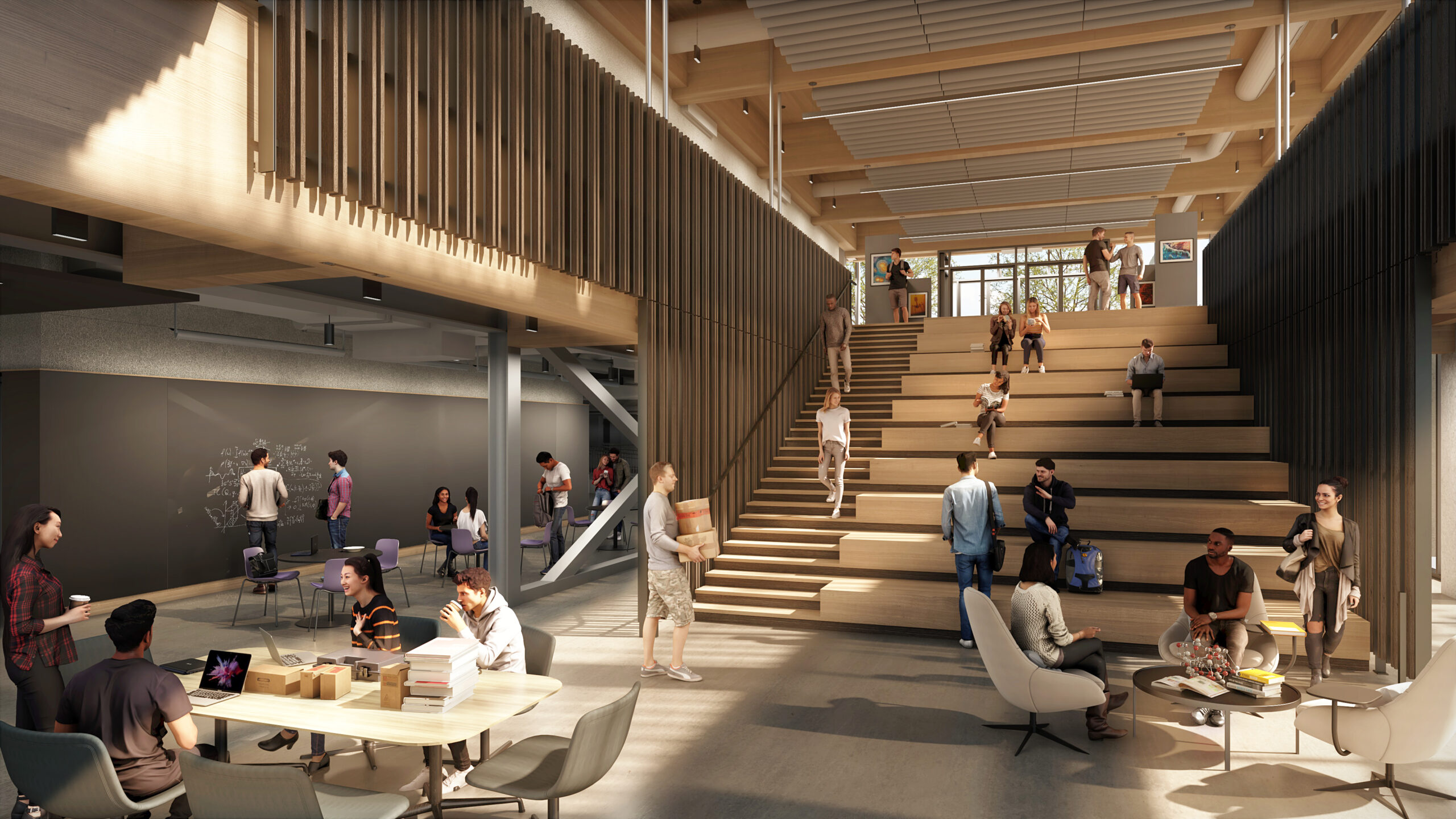
The building utilizes a hybrid structural system of steel, concrete, and timber. Acknowledging the desire for flexibility and adaptability, the more formally programmed spaces are contained within the steel portion of the building, allowing for the floors to be re-purposed and re-planned as institutional needs change. A precast concrete offset core houses gender-neutral restrooms and vertical circulation. A timber structure encapsulates the larger, more socially-focused spaces, offering a warmer aesthetic. The project is targeting LEED Gold.
